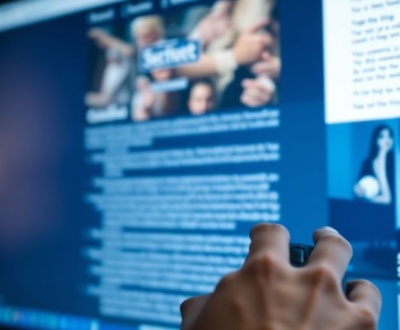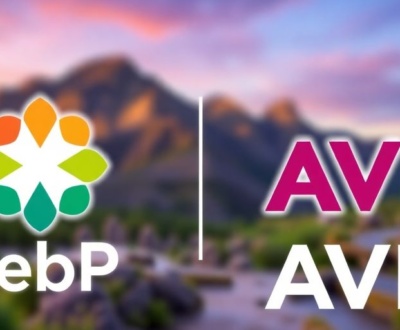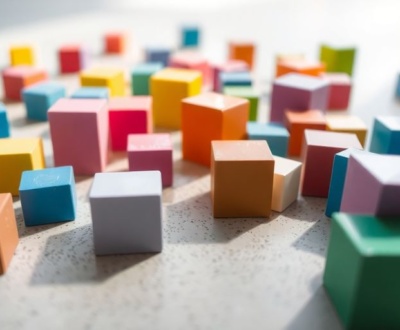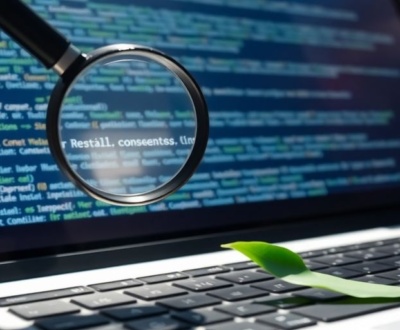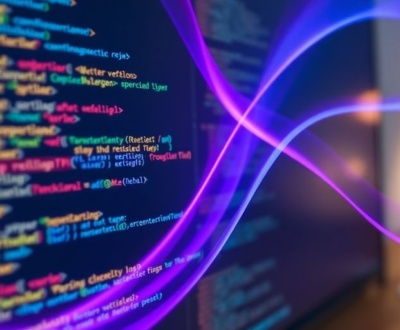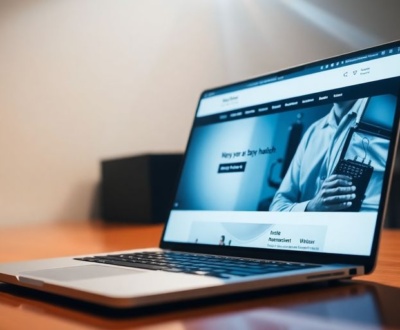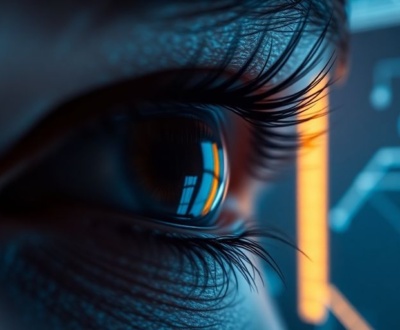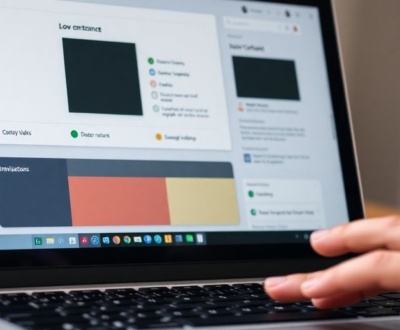Ever tried explaining a vibe to someone, but words just didn’t cut it? That’s where moodboards come in handy. They’ve been around forever, helping designers show off their ideas. But now, with AI video, we can make those static boards actually move and tell a story. It’s like taking your ideas from a flat picture to a living, breathing concept, making it way easier to show what your brand is all about. This article will look at how AI helps turn those early ideas into dynamic visuals, really bringing your brand’s feel to life.
Key Takeaways
- AI tools make creative work faster and help tell brand stories better.
- Video moodboards turn abstract ideas into clear, moving visuals.
- AI video moodboard generators help teams work together and show off ideas.
- Good AI tools let you customize things and give you files you can edit.
- Adding motion and sound to your moodboard makes it more impactful.
The Power of AI in Moodboard Motion Design

Streamlining Creative Workflows
AI is changing how we approach creative tasks, and moodboard design is no exception. It’s not just about making things faster; it’s about unlocking new possibilities. Think about it: instead of spending hours searching for the perfect image or video clip, AI can quickly generate options based on your specific needs. This frees up designers to focus on the bigger picture – the overall concept and how it will resonate with the audience. It’s like having a super-efficient assistant who understands your vision and helps you bring it to life.
Enhancing Visual Storytelling
Visual storytelling is at the heart of effective branding, and AI can help take it to the next level. By using AI to create dynamic moodboards, you can better communicate the emotions and ideas behind your brand. Imagine being able to show clients not just static images, but short, engaging video clips that capture the essence of your brand’s message. This can make a huge difference in how well your ideas are understood and received. It’s about moving beyond simple visuals and creating a truly immersive experience.
Accelerating Brand Visualization
AI tools are significantly speeding up the process of brand visualization. No more endless revisions or back-and-forth emails. With AI, you can quickly experiment with different styles, colors, and layouts to find the perfect fit for your brand. This not only saves time but also allows you to explore more creative options. It’s about turning abstract ideas into tangible visuals in a fraction of the time, giving you a competitive edge in today’s fast-paced market.
AI is not meant to replace human creativity, but to augment it. It’s a tool that can help designers work smarter, not harder, and ultimately create more impactful and engaging brand experiences.
From Static Concepts to Dynamic Visuals
Defining the Video Moodboard
Okay, so we all know moodboards, right? Usually, they’re static images, colors, and text slapped onto a board to give a vibe. But what if we could make them move? That’s where the video moodboard comes in. It’s a way to bring your ideas to life using video clips, animations, and even sound. Think of it as a regular moodboard, but with way more energy. It’s not just about seeing; it’s about feeling.
Bridging Abstract Ideas with Tangible Renditions
Ever try explaining a feeling or concept to someone, and it just doesn’t click? Video moodboards can help. They take those abstract ideas floating around in your head and turn them into something people can actually see and understand. It’s like translating a dream into a language everyone speaks. Instead of just saying "modern and sleek," you can show it with carefully chosen visuals. This is especially useful when you’re trying to get everyone on the same page for a project.
Communicating Brand Feel with Motion
Your brand isn’t just a logo or a color scheme; it’s a whole experience. And video moodboards are a great way to communicate that experience. They let you show the energy, the emotion, and the personality of your brand in a way that static images just can’t. Think about it: a short clip of someone laughing can convey "joyful" way better than a picture of a smiley face. It’s about creating a multi-sensory experience that really sticks with people.
Video moodboards are a game-changer because they allow you to capture the essence of a brand or project in a way that’s both engaging and easy to understand. They’re not just about aesthetics; they’re about communication and connection.
Why AI Video Moodboard Generators Are Essential
AI video moodboard generators are changing how creative teams work. They’re not just a nice-to-have; they’re becoming essential for staying competitive and producing high-quality work efficiently. It’s about more than just saving time; it’s about unlocking new levels of creativity and collaboration.
Fostering Seamless Team Collaboration
AI video moodboard generators enable real-time collaboration among team members. No matter where people are, they can all add ideas, make changes, and give feedback instantly. This makes the creative process much smoother and helps teams create better results together. A video mood board generator facilitates this process.
Boosting Creative Expression and Presentation
These tools help you show off your ideas in a visual way. Instead of just using words, you can use images, videos, and animations to really capture the feeling of your ideas. This is way more effective for showing abstract concepts and moods. It’s like giving your ideas a voice that everyone can understand.
Optimizing Efficiency and Organization
AI video moodboard generators help you stay organized and work more efficiently. They encourage a systematic way to brainstorm and organize ideas. This makes it easier to put together and arrange your thoughts, which saves time so you can focus on the actual creative work. Plus, you can keep track of your creative journey, seeing what works and what doesn’t. It’s like having a personal assistant for your creative process.
Using a video mood board generator is becoming more and more important in today’s visual world. It helps teams work together, express themselves creatively, and stay organized. This makes it a must-have tool, especially with so many people working remotely. It not only makes the creative process easier but also adds a sense of innovation that leads to better results.
Key Features of AI-Powered Visualization Tools
Dynamic AI Builders for Customization
AI-powered visualization tools really shine when it comes to customization. They offer dynamic AI builders that let you tweak every aspect of your video moodboard. Think of it like having a digital sandbox where you can play with different styles, layouts, and effects until you get exactly what you want. It’s not just about picking a template; it’s about crafting something unique that truly represents your brand’s feel. You can even upload your own assets and let the AI integrate them seamlessly. This level of control is a game-changer for creatives who want to push boundaries and explore new visual territories.
Versatility in Layout and Format Adaptation
One of the biggest advantages of using AI in video moodboard creation is the sheer versatility it offers. You’re not stuck with rigid templates or predefined formats. Instead, these tools allow you to adapt the layout and format to suit your specific needs. Need a widescreen video for YouTube? No problem. Want a vertical video for TikTok? Easy. How about a square format for Instagram? Done. The ability to quickly and easily change the dimensions and arrangement of your visual elements is a huge time-saver, especially when you’re working across multiple platforms. It’s all about making sure your message looks its best, no matter where it’s being viewed. For example, you can easily adapt your AI development services to fit any format.
Downloadable and Editable Outputs
AI video moodboard generators aren’t just about creating pretty visuals; they’re about providing practical tools for your workflow. That’s why the ability to download and edit the outputs is so important. You can export your moodboard in various formats, such as MP4, MOV, or even as a series of images. This means you can easily share your work with clients, collaborators, or stakeholders. Plus, the editable nature of these outputs means you can further refine and customize your moodboard in other video editing software, like Adobe Premiere Pro or Final Cut Pro. It’s all about giving you the flexibility to take your vision from concept to reality.
The best AI visualization tools don’t just generate content; they empower you to iterate, refine, and ultimately create something truly special. They bridge the gap between inspiration and execution, making the creative process more efficient and enjoyable.
Integrating Motion and Sound for Impact
Adding Animated GIFs and Video Snippets
Static moodboards are fine, but let’s be real, they can feel a bit…flat. To really bring your brand’s vibe to life, you need movement. Think about incorporating animated GIFs and short video clips. These don’t have to be polished masterpieces; even rough cuts or simple animations can add a ton of energy and help communicate the feeling you’re going for. It’s about showing, not just telling. You can easily add video mood board elements to your board.
Incorporating Audio Elements for Sensory Depth
Don’t forget about sound! Audio is a powerful tool for evoking emotions and creating a more immersive experience. Think about adding music snippets, sound effects, or even voiceovers to your moodboard. The right audio can instantly set the tone and help people understand the overall feel you’re aiming for.
Imagine you’re creating a moodboard for a luxury car brand. A sleek, modern visual paired with a sophisticated jazz track can instantly communicate elegance and refinement. On the other hand, a rugged off-road vehicle might be better represented with the sound of a powerful engine and the crunch of gravel.
Crafting a Multi-Sensory Brand Experience
Ultimately, the goal is to create a multi-sensory experience that truly captures the essence of your brand. By combining visuals, motion, and sound, you can create a moodboard that is not only informative but also engaging and memorable. This helps stakeholders connect with your vision on a deeper level. Consider these points when building your moodboard:
- Think about the overall feeling you want to evoke.
- Choose visuals, motion, and sound that complement each other.
- Don’t be afraid to experiment and try new things.
- Make sure the elements you choose are consistent with your brand’s identity.
By carefully considering these factors, you can create a moodboard that effectively communicates your brand’s feel and inspires creative ideas. Audio cues can be very effective.
Transforming Disorganized Boards into Cohesive Narratives

It’s easy for a moodboard to become a chaotic collection of images, videos, and audio clips. The real magic happens when you transform that disorganized mess into a clear, compelling story. AI tools can help you structure your ideas and present them in a way that resonates with your audience.
Structuring Visual Elements for Clarity
Think of your moodboard as a visual narrative. What’s the first thing you want people to see? What feeling do you want to evoke? AI can help you arrange elements in a way that guides the viewer’s eye and tells a story. Consider these points:
- Prioritize key elements: Make sure the most important visuals are prominent.
- Create visual hierarchy: Use size, placement, and color to draw attention to specific areas.
- Group related items: Organize elements into logical clusters to show connections.
Refining and Resizing Media with AI
AI-powered tools can automatically resize and crop images and videos to fit your moodboard’s layout. This ensures a consistent look and feel, even if your source materials are different sizes and formats. It’s about making everything work together visually. For example, you can use AI to:
- Automatically crop images to a specific aspect ratio.
- Resize videos without losing quality.
- Adjust brightness and contrast for a uniform look.
Applying Consistent Brand Styles
One of the biggest challenges is making sure your moodboard reflects your brand’s identity. AI can help you apply consistent styles across all elements, ensuring a cohesive and professional presentation. This might include:
- Applying brand colors to images and videos.
- Adding your logo and watermark.
- Using consistent fonts and typography.
A well-structured moodboard is more than just a collection of pretty pictures. It’s a powerful communication tool that can help you convey your vision and inspire your team. By using AI to organize and refine your visual elements, you can create a moodboard that truly captures the essence of your brand.
Practical Applications for Brand Visualization
Developing Marketing Campaign Concepts
Brand visualization is super useful when you’re trying to come up with new marketing campaigns. Instead of just talking about ideas, you can actually see what they might look like. This helps everyone get on the same page faster. It’s like, instead of saying "We want a campaign that feels energetic," you can show a video moodboard with fast cuts, bright colors, and upbeat music. This makes the concept way more tangible and easier to discuss.
Visualizing Television and Film Projects
Think about how movies and TV shows get made. Before they even start filming, they need to figure out the look and feel. AI video moodboards can be a game-changer here. You can quickly put together scenes, character designs, and color palettes to get a sense of the overall aesthetic. It’s way more efficient than traditional methods, and it helps the whole team—from directors to costume designers—stay aligned.
Crafting Immersive Digital Experiences
Creating digital experiences, like websites or virtual reality environments, is all about making something that feels real and engaging. Brand visualization helps you do that by letting you experiment with different visual elements and interactions. You can use AI to generate mockups of user interfaces, animations, and even interactive elements. This way, you can test out different ideas and see what works best before you start building the real thing.
Imagine you’re designing a new website for a travel company. Instead of just sketching out wireframes, you can create a video moodboard that shows how the site will look and feel as users navigate through it. This gives you a much better sense of the overall experience and helps you make more informed design decisions.
Here’s a simple example of how brand visualization can be used in different areas:
- Marketing: Creating video ads, social media content, and email campaigns.
- Product Development: Visualizing new product designs and features.
- Internal Communications: Communicating company values and goals to employees.
Wrapping It Up
So, we’ve talked a lot about how AI video can really change things up for visualizing brand feel. It’s pretty clear that using these tools can make a big difference. You can go from just an idea to something you can actually see and show people, which is super helpful. It’s not about replacing human creativity, but more like giving us a new, powerful paintbrush. This stuff helps teams work better together, gets ideas across faster, and just makes the whole creative process smoother. It’s a cool way to bring your brand’s vibe to life, making sure everyone’s on the same page from the start. Definitely worth checking out if you want to make your projects pop.
Frequently Asked Questions
What is a video mood board?
A video mood board is like a digital scrapbook for your video project. Instead of just pictures, it uses short video clips, sounds, and images to show the feeling and style you’re going for. It helps everyone involved understand the vision clearly.
How does AI help with video mood boards?
AI makes creating video mood boards much faster and easier. It can help you find and put together clips, suggest ideas, and even make changes quickly. This saves a lot of time and lets you try out more ideas.
Can I customize the video mood board with AI tools?
Yes, AI tools can help you customize almost everything. You can change the layout, size, and even the style of the videos and images to match your brand perfectly. It’s like having a super-smart assistant.
Is it easy to share and work with others on an AI video mood board?
Absolutely! AI tools make it simple to share your mood board with your team. Everyone can see it, add their thoughts, and make changes in real-time, no matter where they are. This helps everyone work together better.
Can I add sound and music to my AI video mood board?
Yes, adding sound and music can make your mood board even more powerful. It helps show the emotional feel of your brand or project, making it more real and impactful for viewers.
What are some common uses for AI video mood boards?
AI video mood boards are great for many things! You can use them to plan marketing campaigns, visualize scenes for movies or TV shows, or even create immersive digital experiences. They help bring any idea to life visually.
About this blog
We are a digital marketing company with a focus on helping our customers achieve great results across several key areas.
Request a free quote
We offer professional SEO services that help websites increase their organic search score drastically in order to compete for the highest rankings even when it comes to highly competitive keywords.


